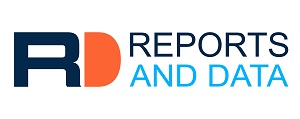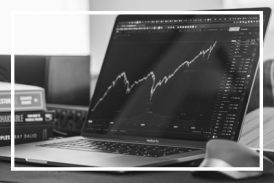Global Spun Bond Non-Woven Market to Reach USD 27.0 Billion by 2034, Driven by Hygiene and Healthcare Demand

Reports And Data
The global Spun Bond Non-Woven Market is driven by rising hygiene demand, medical textile innovations, and sustainability trends.
VANCOUVER, BC, CANADA, August 14, 2025 /EINPresswire.com/ -- The global Spun Bond Non-Woven Market is on track for strong long-term growth, with market size projected to rise from USD 14.0 billion in 2024 to USD 27.0 billion by 2034, registering a healthy compound annual growth rate (CAGR) of 7.00%. Industry analysts attribute this growth to the increasing demand for hygiene products, expanding healthcare applications, and rising use of sustainable materials in multiple sectors.Get Free Sample PDF (To Understand the Complete Structure of this Report [Summary + TOC]) @ https://www.reportsanddata.com/download-free-sample/1459
Hygiene and Medical Textiles Lead the Market
The largest share of the market belongs to the hygiene products segment, which accounted for 40% of total demand in 2024. Valued at USD 5.6 billion that year, this segment is expected to grow to USD 10.8 billion by 2034. Growing consumer awareness about personal hygiene, coupled with global health initiatives from organizations like the World Health Organization (WHO), is supporting this steady increase.
Medical textiles represent the fastest-growing application segment. With rising investments in healthcare infrastructure, especially in emerging economies, the demand for non-woven fabrics in surgical gowns, masks, drapes, and other hospital essentials is accelerating.
Polypropylene Maintains Dominance in Material Choice
By product type, polypropylene spun bond non-wovens hold a commanding 60% share of the market. Valued at USD 8.4 billion in 2024, this segment is projected to reach USD 16.2 billion by 2034, growing at 6.8% CAGR. Polypropylene remains popular due to its cost-effectiveness, versatility, and suitability for both hygiene and medical applications.
Production Volumes Growing Steadily
In 2024, the global production volume of spun bond non-wovens was estimated at 3.5 million tons. This is expected to increase to 6.5 million tons by 2034, representing a CAGR of 6.5%. Interestingly, while total production volume grew by 4% in 2024, market value rose by 7%. This trend suggests that average unit prices are increasing and that there is a shift towards higher-value, specialized products.
Price Trends Influenced by Raw Materials and Supply Chains
Pricing in the spun bond non-woven market has been influenced by fluctuations in raw material costs, especially polypropylene. In 2024, polypropylene prices increased by 9% due to supply chain disruptions and rising energy costs. According to ICIS, the average spot price for polypropylene surged by 11% in early 2025.
Regional differences are also notable. Asia Pacific enjoys cost advantages due to lower logistics expenses and fewer trade tariffs, while North America faces higher costs linked to regulatory compliance and strong local demand. Adoption of AI-driven dynamic pricing models has allowed early adopters to improve profit margins by about 2%, according to research from SpringerMaterials.
Key Growth Drivers
Technological Advancements in Manufacturing
The use of AI, IoT, and other smart manufacturing technologies has improved production efficiency and product quality. McKinsey reports that 60% of manufacturers adopting these tools have reduced production costs by around 15%.
Sustainability Initiatives
Growing demand for biodegradable and eco-friendly non-wovens is reshaping the industry. Regulations like the European Union’s Green Deal, which targets a 55% reduction in carbon emissions by 2030, are accelerating the adoption of greener materials. Deloitte notes a 25% increase in investments in sustainable manufacturing processes over the past year.
Healthcare Sector Growth
The WHO has recorded a 12% increase in healthcare spending in Asia Pacific, leading to greater demand for medical-grade non-wovens used in hospitals, clinics, and home care settings.
Challenges Impacting the Market
While the outlook is positive, the industry faces several challenges:
Regulatory Compliance: Environmental and product safety regulations, such as the EU’s REACH standards, have increased compliance costs by approximately 8%.
Supply Chain Disruptions: Geopolitical tensions and raw material shortages continue to cause delays and increase lead times.
Rising Energy and Raw Material Costs: The International Energy Agency reports a 10% rise in energy prices, putting pressure on manufacturers’ profit margins.
Regional Overview
Asia Pacific: Currently the market leader, accounting for the highest share of global production (45% in 2023). Growth is driven by industrial expansion, urbanization, and cost advantages in production. The region is also experiencing a surge in healthcare spending.
North America: Expected to post strong growth, supported by rapid adoption of advanced manufacturing technologies and increased demand for sustainable products.
Europe: Benefits from strong regulatory support for eco-friendly materials and investments in healthcare infrastructure.
Access Full Report Description with Research Methodology and Table of Contents @ https://www.reportsanddata.com/report-detail/spun-bond-non-woven-market
Sustainability and Innovation Taking Center Stage
The global shift towards environmentally responsible products is one of the defining trends in the spun bond non-woven market. In 2024, global demand for sustainable materials rose by 18% year-over-year. According to the American Chemical Society, research and development spending for biodegradable non-wovens increased by 22%, while investment in sustainable production processes rose by 15%.
Manufacturers are responding with innovations such as plant-based polymers, recyclable fibers, and energy-efficient production methods. These advancements not only meet consumer demand but also help companies comply with tightening environmental regulations.
Spun Bond Non-Woven Competitive Strategies & Notable Developments
Top 10 Companies
Berry Global
Freudenberg Group
Kimberly-Clark
Toray Industries
Ahlstrom-Munksjö
DuPont
Johns Manville
Fitesa
Avgol Nonwovens
Pegas Nonwovens
Strategy
Top players are competing through vertical integration and strategic partnerships. Berry Global, with a 20% market share, focuses on expanding its product portfolio through acquisitions. Freudenberg Group invests in R&D to develop sustainable materials, while Kimberly-Clark leverages its global distribution network to enhance market reach. Strategic moves include DuPont's acquisition of Laird Performance Materials to enhance its product offerings and Toray Industries' partnership with local manufacturers to strengthen its supply chain.
Request a customization of the report @ https://www.reportsanddata.com/request-customization-form/1459
Spun Bond Non-Woven Market Segmentation
By Product Type
Polypropylene Spun Bond Non-Wovens
Polyester Spun Bond Non-Wovens
Polyethylene Spun Bond Non-Wovens
By Application
Hygiene Products
Medical Textiles
Construction Materials
Automotive Interiors
By End User
Healthcare
Construction
Automotive
Consumer Goods
By Technology
Spunlaid
Meltblown
Composite
By Distribution Channel
Direct Sales
Distributors
Online Retail
Read Similar Reports:
Disposable Laparoscopic Trocars Market https://www.reportsanddata.com/report-detail/disposable-laparoscopic-trocars-market
External Nasal Dilator Market https://www.reportsanddata.com/report-detail/external-nasal-dilator-market
Diagnostic Electrocardiograph Market https://www.reportsanddata.com/report-detail/diagnostic-electrocardiograph-ecg-market
Eyesight Test Device Market https://www.reportsanddata.com/report-detail/eyesight-test-device-market
Ergometer Exercise Bikes Market https://www.reportsanddata.com/report-detail/ergometer-exercise-bikes-market
About Reports and Data
Reports and Data is a market research and consulting company that provides syndicated research reports, customized research reports, and consulting services. Our solutions purely focus on your purpose to locate, target, and analyze consumer behavior shifts across demographics, across industries, and help clients to make smarter business decisions. We offer market intelligence studies ensuring relevant and fact-based research across multiple industries, including Healthcare, Touch Points, Chemicals, Products, and Energy. We consistently update our research offerings to ensure our clients are aware of the latest trends existent in the market. Reports and Data has a strong base of experienced analysts from varied areas of expertise. Our industry experience and ability to develop a concrete solution to any research problems provides our clients with the ability to secure an edge over their respective competitors.
Debanjan Biswas
Reports and Data
+91 80872 27888
purushottam|reportsanddata.com| |purushottam|reportsanddata.com
Legal Disclaimer:
EIN Presswire provides this news content "as is" without warranty of any kind. We do not accept any responsibility or liability for the accuracy, content, images, videos, licenses, completeness, legality, or reliability of the information contained in this article. If you have any complaints or copyright issues related to this article, kindly contact the author above.
CES Corp-Home of Intelliflex Launches U.S. Subsidiary Intelliflex USA Inc and 172,000 sq. ft. Plant in Dallas–Fort Worth
Book: 'Father Shares Secrets to Success and Happiness with His Children' is now available to the public
Robotic Process Automation Reshapes Hospital Workflows Across the USA Under Pressure
Więcej ważnych informacji
 Jedynka Newserii
Jedynka Newserii

 Jedynka Newserii
Jedynka Newserii

Konsument

Polacy nie korzystają z hossy trwającej na warszawskiej giełdzie. Na wzrostach zarabiają głównie inwestorzy zagraniczni
Od października 2022 roku na rynkach akcji trwa hossa, nie omija ona także warszawskiej giełdy. Mimo to inwestorzy indywidualni odpowiadają zaledwie za kilkanaście procent inwestycji, a o wzrostach decyduje i na nich zarabia głównie kapitał z zagranicy. Widać to również po napływach i odpływach do i z funduszy inwestycyjnych. Zdaniem Tomasza Koraba, prezesa EQUES Investment TFI, do przekonania Polaków do inwestowania na rodzimej giełdzie potrzeba zysków z akcji, informacji o tych zyskach docierającej do konsumentów oraz czasu.
Polityka
Obowiązek zapełniania magazynów gazu w UE przed sezonem zimowym ma zapewnić bezpieczeństwo dostaw. Wpłynie też na stabilizację cen

Unia Europejska przedłuży przepisy z 2022 roku dotyczące magazynowania gazu. Będą one obowiązywać do końca 2027 roku. Zobowiązują one państwa członkowskie do osiągnięcia określonego poziomu zapełnienia magazynów gazu przed sezonem zimowym. Magazyny gazu pokrywają 30 proc. zapotrzebowania Unii Europejskiej na niego w miesiącach zimowych. Nowe unijne przepisy mają zapewnić stabilne i przystępne cenowo dostawy.
Infrastruktura
Gminy zwlekają z uchwaleniem planów ogólnych zagospodarowania przestrzennego. Może to spowodować przesunięcie terminu ich wejścia w życie

Reforma systemu planowania i zagospodarowania przestrzennego rozpoczęła się we wrześniu 2023 roku wraz z wejściem w życie większości przepisów nowelizacji ustawy z 27 marca 2003 roku. Uwzględniono w niej plany ogólne gminy (POG) – nowe dokumenty planistyczne, za których przygotowanie mają odpowiadać samorządy. Rada Ministrów w kwietniu br. uchwaliła jednak ustawę o zmianie ustawy z 7 lipca 2023 roku, a jej celem jest zmiana terminu obowiązywania studiów uwarunkowań i kierunków zagospodarowania przestrzennego gmin na 30 czerwca 2026 roku. Wskazana data może nie być ostateczna z uwagi na to, że żadna z gmin nie uchwaliła jeszcze POG.
Partner serwisu
Szkolenia

Akademia Newserii
Akademia Newserii to projekt, w ramach którego najlepsi polscy dziennikarze biznesowi, giełdowi oraz lifestylowi, a także szkoleniowcy z wieloletnim doświadczeniem dzielą się swoją wiedzą nt. pracy z mediami.








.gif)

 |
| |
| |
|